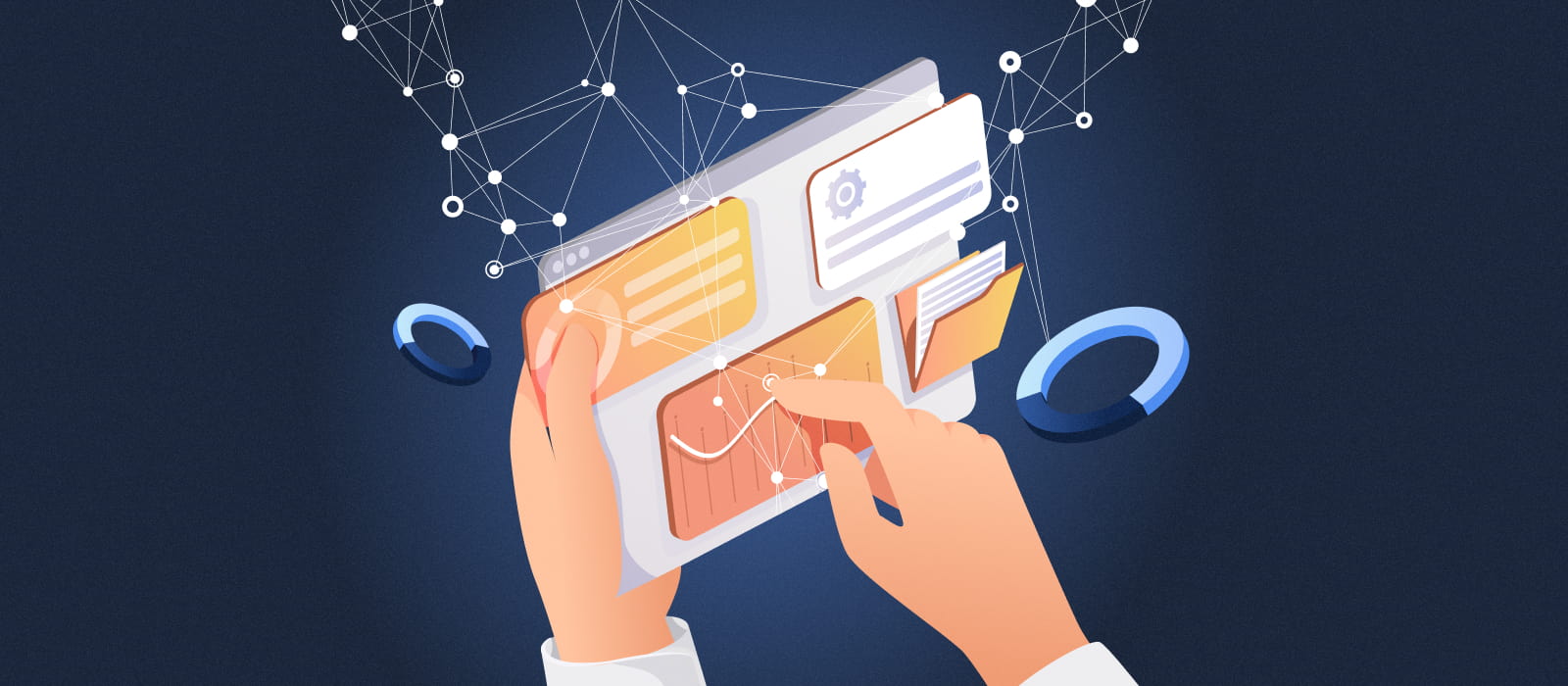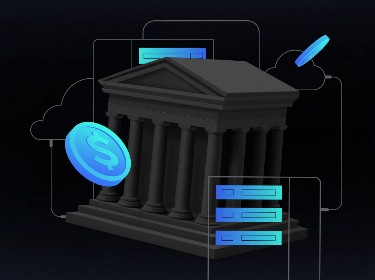Business intelligence is the driving force of well-grounded business decisions. However, traditional BI solutions require tech experts to extract insights. Luckily, self-service BI empowers non-technical users to access and analyze data too.
According to the Fortune Business Insights report, the global business intelligence (BI) market size is estimated to grow from $29.42 billion in 2023 to $54.27 billion by 2030.
This significant growth reflects the increased recognition of the value that business intelligence brings to organizations, allowing them to make informed decisions, optimize various operations, and adapt to ever-changing market dynamics. Yet, traditional BI requires data analysts and other technical specialists to interpret data, leading to bottlenecks in decision-making.
To mitigate this issue, companies have started adopting self-service BI tools. They enable non-technical specialists to explore and extract insights from data without depending on IT teams. This way, self-service BI empowers businesses to facilitate the exploration of data and, subsequently, boost the decision-making process.
Read on to find out the key benefits and features of self-service business intelligence, discover how it complements traditional BI, and find out how to integrate this technology into your business operations.
What are the benefits of self-service BI?
![]()
Even if your organization is already utilizing business intelligence, self-service BI will introduce additional game-changing opportunities, including:
Reduced dependency on tech experts
Self-service BI allows users to access, analyze, and derive insights from data without relying on data experts. This promotes data-driven decision-making across various roles within an organization.
Additionally, as some data analytics tasks are delegated to other specialists, data engineers can focus on more complex data-related challenges, such as optimizing data infrastructure and ensuring data quality.
Faster decision-making
With self-service BI tools, users get real-time or near-real-time data access, allowing for quicker decision-making, and enabling organizations to respond promptly to changing market trends and make timely strategic choices.
Expanded data exploration
Since self-service business intelligence encourages individuals from diverse roles and professional backgrounds to delve into data, they can look at it from a fresh perspective, discovering hidden business opportunities or challenges.
Report customization
Using self-service BI solutions, each department or specialist can customize their reports and dashboards based on what’s most relevant to them, rather than relying on one-size-fits-all reports.
This way, data is presented in the most clear and understandable format for a particular audience. It reduces the likelihood of misinterpretations or misunderstandings, which can lead to costly mistakes.
Enhanced team collaboration
Self-service BI tools simplify the sharing of reports and dashboards, promoting teamwork and cross-departmental collaboration. This ensures that everyone works with the same, most relevant data, enhancing alignment and efficiency across the organization.
Discover how our data analytics services can contribute to your company's growth
Is self-service BI better than traditional BI?
While self-service BI can have a significant impact on business processes, it should not be seen as a replacement for traditional BI but rather as a complement to it.
It is preferable to leverage these approaches together to cater to both the standardized and custom analytical needs of an organization, creating a robust, flexible, and data-driven business environment.
By utilizing this dual method, you can:
Cater to individual needs
Traditional business intelligence is primarily designed for generating standardized, routine reports and conducting intricate analyses that serve the entire organization. On the other hand, self-service BI is geared toward handling spontaneous queries and providing insights specific to individual departments.
Ensure robust data governance and quality
Traditional BI typically implements robust data governance and quality control measures. Self-service BI can leverage this existing structure, ensuring that users access and analyze high-quality, consistent data.
Find out how to create an effective data governance strategy with our guide
Consider different skill levels
Not everyone within an organization is proficient in data management and analytics. Traditional BI ensures that complex analyses are managed by professionals, whereas self-service BI empowers individuals with a basic understanding to extract insights without requiring advanced skills.
Achieve better scalability
While self-service business intelligence tools aim more for agility, traditional BI systems are often designed with scalability in mind. The foundational structure provided by traditional BI can support the growth of self-service BI, ensuring that as more users come on board, the system remains stable and performant.
Gain a holistic business perspective
Traditional BI provides a macro view of the organization’s performance, while self-service BI can dive into micro-level details. When used together, they ensure that decision-makers at all levels have a complete, 360-degree view of the business.
What are the key features of an efficient self-service BI tool?
![]()
There are several important features a self-service business intelligence tool should have to allow users to handle data effectively. These include:
- Intuitive user interface (UI) enables users to navigate the tool and its features without needing in-depth training, ensuring accessibility and user-friendliness.
- Data connectivity allows the self-service BI solution to smoothly integrate with a range of data sources, including databases, spreadsheets, cloud services, and third-party applications, enabling users to easily access and handle data.
- Data preparation tools let users clean and transform data to achieve more effective data management (e.g. address missing values, delete duplicates, or convert data types).
- Interactive dashboards provide users with an opportunity to create customized dashboards that allow them to delve into specific details, adjust input, and effortlessly change timeframes, etc.
- Data visualization tools allow users to transform data into different graphical variations, including bar charts, pie charts, scatter plots, etc.
- Security features protect sensitive business data with various safety measures, such as role-based access, data encryption, and audit trails.
Struggling with creating an appealing and intuitive user interface? Our proficient UI/UX designers will help
Overview of top 3 self-service BI tools
There are quite a few self-service business intelligence tools you can leverage to drive decision-making in your organization.
Here is a list of the top three solutions approved by our big data experts.
Tableau
Tableau serves as a self-service BI tool allowing for data analysis, management, visualization, and sharing.
It serves a bunch of business needs, from reporting and creating interactive dashboards to performing predictive analytics and assessing business performance.
One of the key features of Tableau is its intuitive, drag-and-drop interface that enables users to create visualizations and dashboards without needing advanced technical skills.
The solution is highly scalable, making it suitable both for middle-size companies and large corporations.
Tableau effortlessly integrates with a wide range of data sources, such as Microsoft Excel, Dropbox, Google Sheets, MongoDB, MySQL, Salesforce, and many others. This provides users with access to an extensive and diverse pool of data, allowing them to work with a wealth of information.
Power BI
Power BI is a data analytics platform by Microsoft, offering both self-service and traditional business intelligence capabilities. It is a versatile tool for various business requirements, ranging from data visualization to complex data modeling and analysis.
Power BI seamlessly connects with a wide array of Microsoft products, such as Excel, Azure, and Dynamics 365, as well as third-party applications and platforms. This ensures that businesses can consolidate data from disparate systems, providing a holistic view of their operations.
The platform offers robust security features, ensuring that sensitive data remains protected and that only authorized individuals can access it.
Power BI also has Copilot — a natural language processing AI that allows users to ask questions about their data in a conversational manner. Copilot interprets these questions and instantly generates relevant visualizations and data as answers.
Moreover, once Copilot generates a report or visualization in response to a user’s query, it can also recommend related information that can enrich the overall understanding.
Tableau or Power BI? Which tool is better for your business needs? Let’s decide based on our detailed comparison of the two solutions
Sisense
Sisense is a cloud-based business intelligence solution that offers a broad range of capabilities. It effectively caters to both technical professionals and non-technical users.
Thanks to its intuitive drag-and-drop interface users can effortlessly create, modify, and analyze reports and dashboards. Plus, Sisense is highly customizable, allowing users to choose visual themes and install custom plugins, ensuring that businesses can tailor the platform to their specific needs.
Sisense supports a broad range of data sources, including SQL Server, MySQL, Oracle, Salesforce, Google Analytics, Zendesk, and more.
Additionally, the tool allows businesses to embed analytics directly into their applications, portals, or websites. This means users can access insights without leaving their primary work environment.
How to leverage self-service BI in your business?
![]()
To unlock the full potential of self-service business intelligence and achieve tangible benefits for your organization, our data experts suggest adhering to this six-step plan:
Step 1. Evaluate your current data management
Examine your organization’s current data management practices. This assessment will allow you to understand the current state of data governance, quality, and accessibility, as well as the data analytics techniques in use and the overall level of data literacy within the company.
Step 2. Identify business needs
Define what you aim to achieve with self-service BI. The objectives could include improving overall decision-making, enhancing operational efficiency, uncovering growth opportunities, mitigating risks, or solving existing problems.
Step 3. Choose the right self-service BI tool
Ensure that the tool you choose can seamlessly integrate with your current systems and data sources, while also providing access to external databases. Additionally, the solution should be able to expand and accommodate growing data volumes and user demands, ensure high-level data security, and align with your budget.
Step 4. Perform staff training
Conduct comprehensive employee training and provide your team with the necessary guidelines for utilizing self-service business intelligence. This ensures that your team is well-equipped to make the most of self-service BI, promoting effective data analysis.
Step 5. Monitor tool performance
Continuously collect feedback from self-service BI users to evaluate its influence on business operations and decision-making. This ongoing assessment helps in identifying areas for improvement and addressing any concerns or challenges users encounter while working with self-service BI tools.
Besides, it is important to evaluate the return on investment (ROI) of your self-service BI implementation to determine whether it is delivering on its intended objectives, such as improved decision-making and efficiency gains.
Step 6. Stay updated
Monitor the self-service BI landscape for emerging tools, features, and trends that can enhance your analytics capabilities and allow you to address your business needs even more efficiently.
Streamline your decision-making with PixelPlex business intelligence services
Need assistance with implementing self-service BI solutions into your business processes?
You can rely on our proficient data analysts and engineers. Whether you aim to integrate an existing self-service BI tool or require a tailor-made solution, we are here to help.
With over 7 years of experience in delivering business intelligence solutions and a track record of over 450 data-intensive projects successfully completed, we at PixelPlex understand the critical role efficient data utilization plays in fostering business growth.
Contact us and harness the full potential of your data.




